As one of the most prominent figures in the American Civil Rights Movement, Rosa Parks’ unwavering determination and pivotal role in challenging racial segregation has solidified her place in history. Her courageous act of defiance on a Montgomery bus in 1955 continues to inspire and educate people worldwide about the importance of equality and social justice. Let’s reflect on some key Rosa Parks facts that highlight her remarkable life and contributions.
Important Rosa Parks Facts
Rosa Parks was born in 1913.
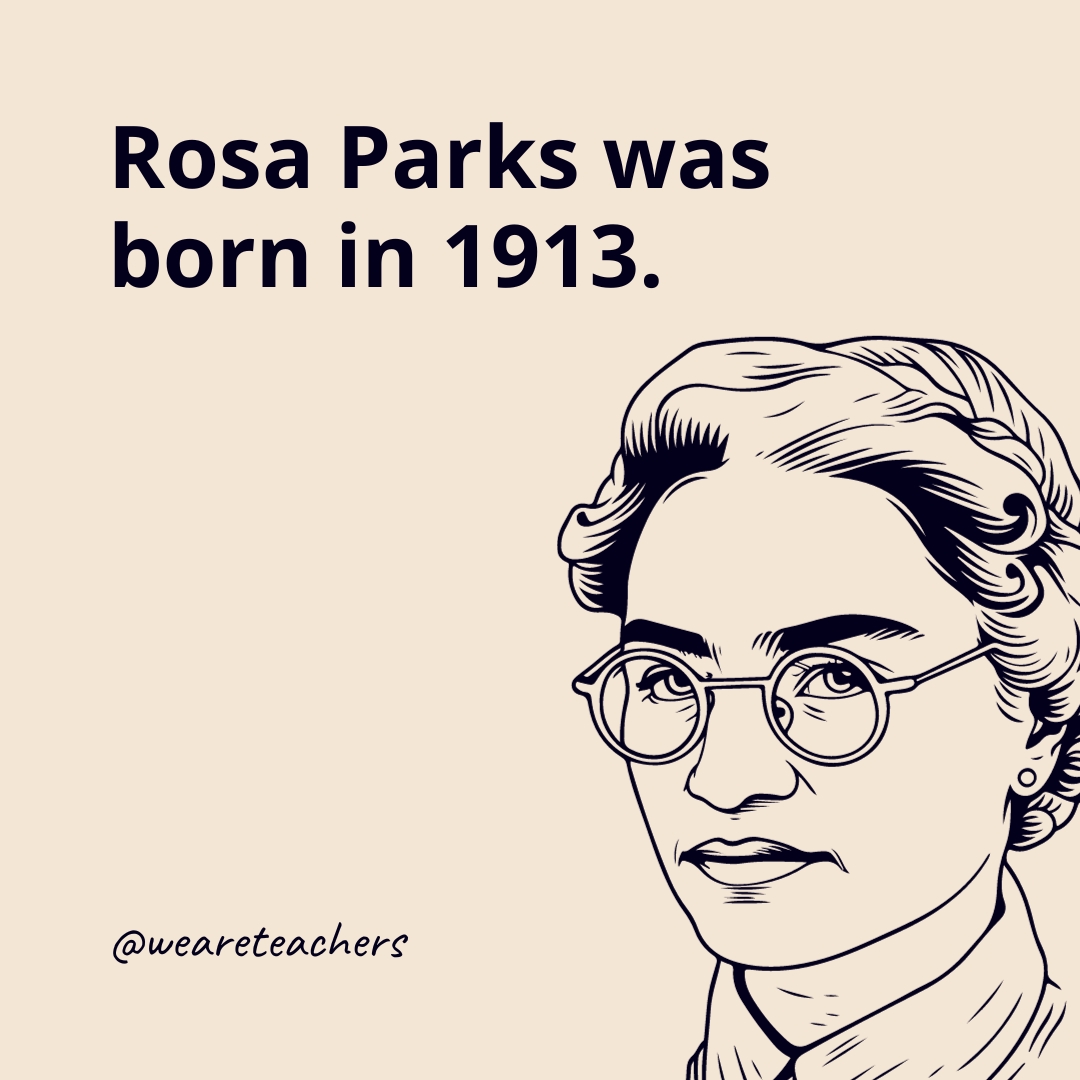
Parks was born in Tuskegee, Alabama.
Source: Library of Congress
Rosa Parks’ grandparents were former slaves.
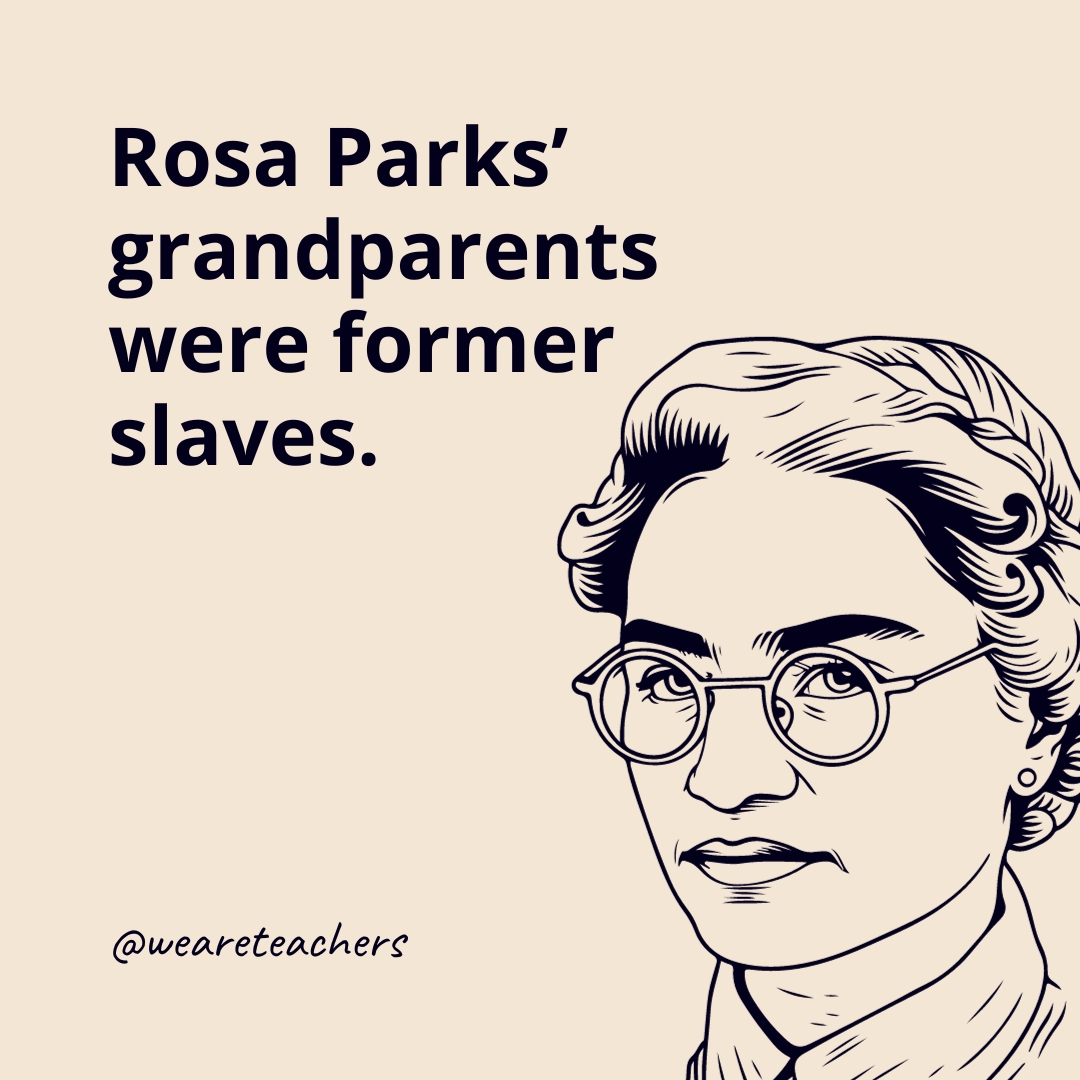
She came from a family of strong advocates for racial equality. She even witnessed her father standing outside with a shotgun as the Ku Klux Klan marched by.
Source: The National Constitution Center
Rosa Parks attended the Montgomery Industrial School for Girls.

Her family moved to Montgomery, Alabama, in 1914.
Source: Library of Congress
Rosa Parks married Raymond A. Parks in 1932.
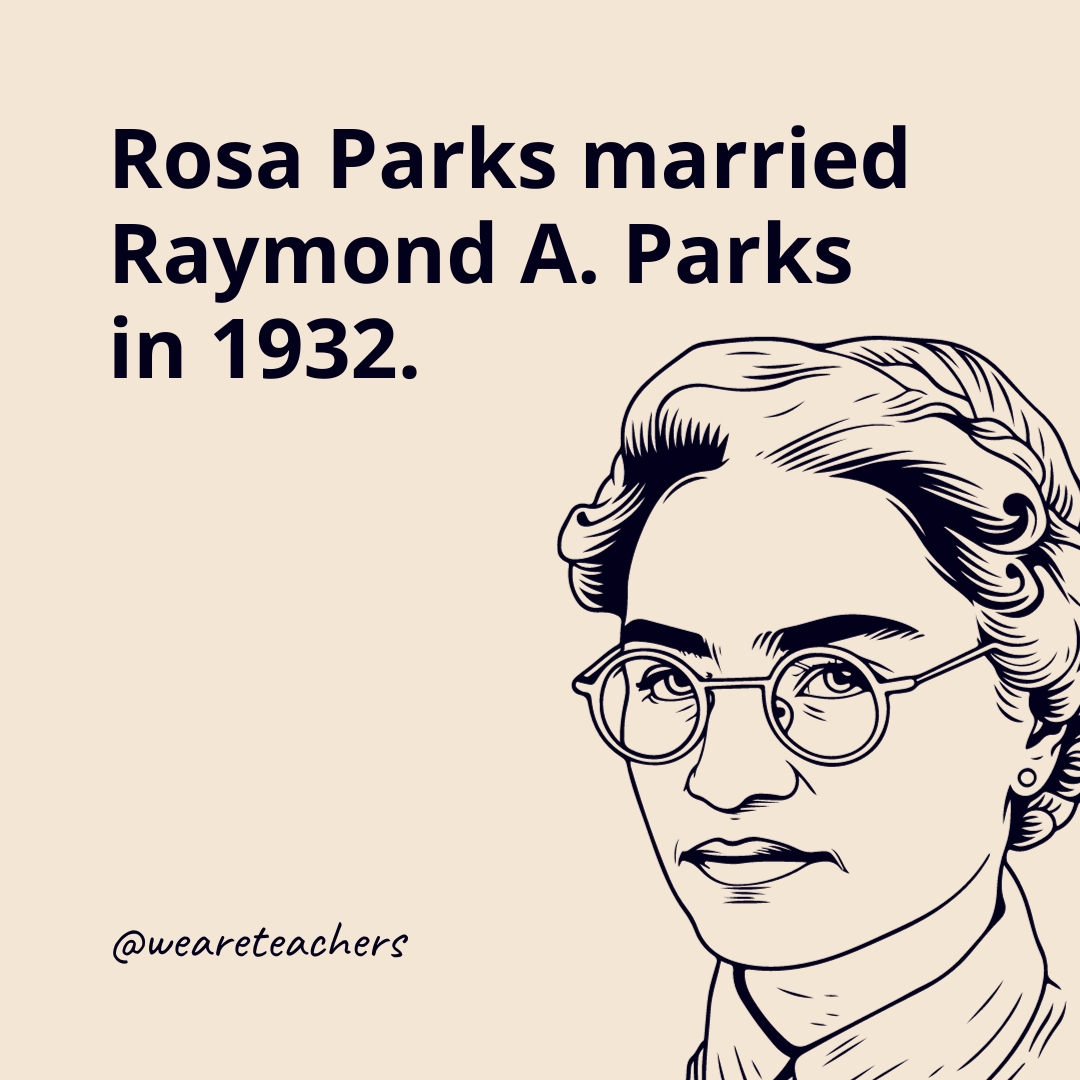
They remained married until his death in 1977.
Source: Library of Congress
Rosa Parks graduated from high school.

Rosa Parks earned her diploma in 1933 when less than 7% of African Americans graduated from high school. She had dropped out to care for her dying grandmother, but after getting married, her husband encouraged her to return and finish school.
Source: Library of Congress
Rosa Parks was the secretary of the NAACP in Montgomery, Alabama.
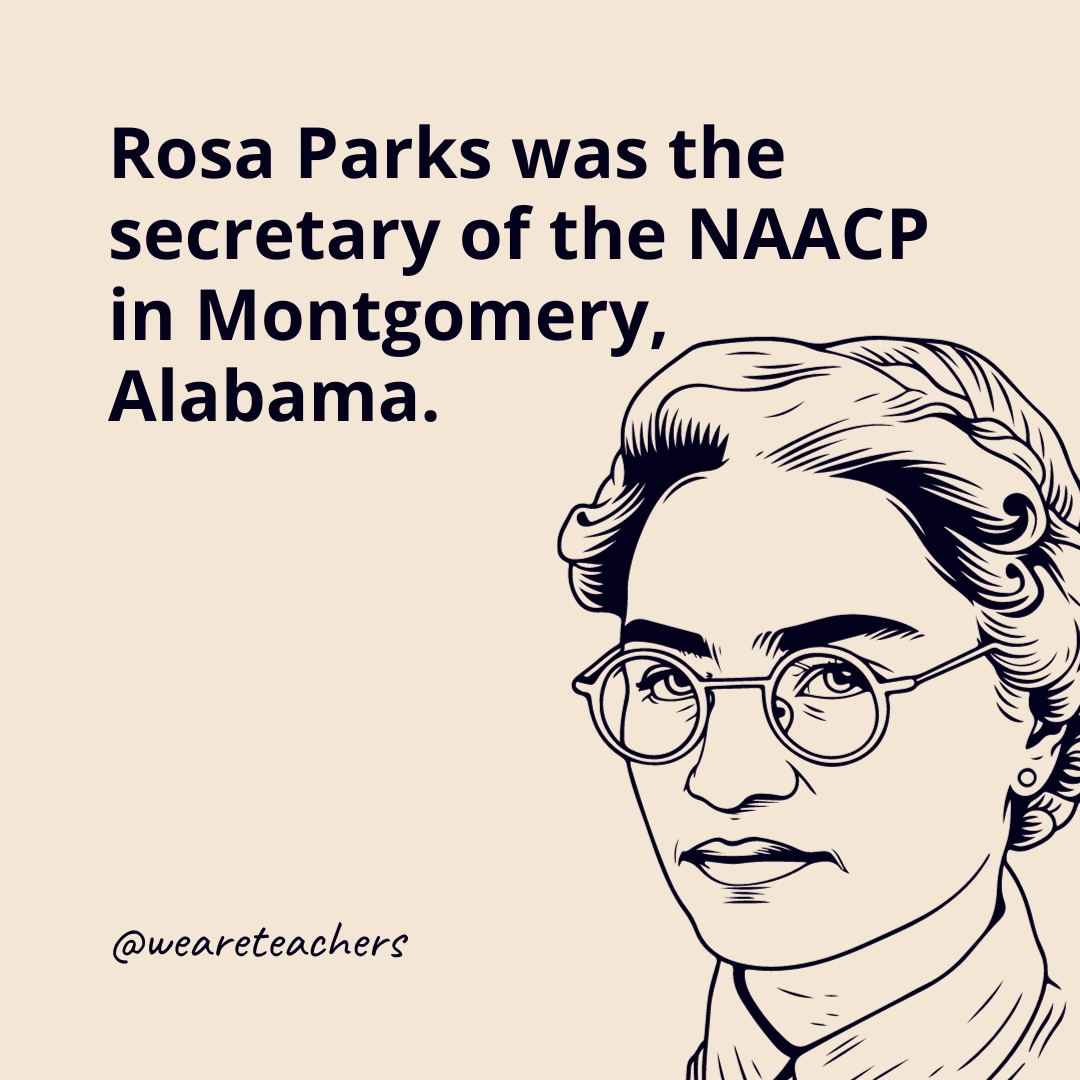
This required Parks to travel throughout Alabama, interviewing victims of discrimination and those who had witnessed lynchings. The NAACP selected her for the role in 1943.
Source: Library of Congress
Rosa Parks became an advisor for the NAACP Youth Council.
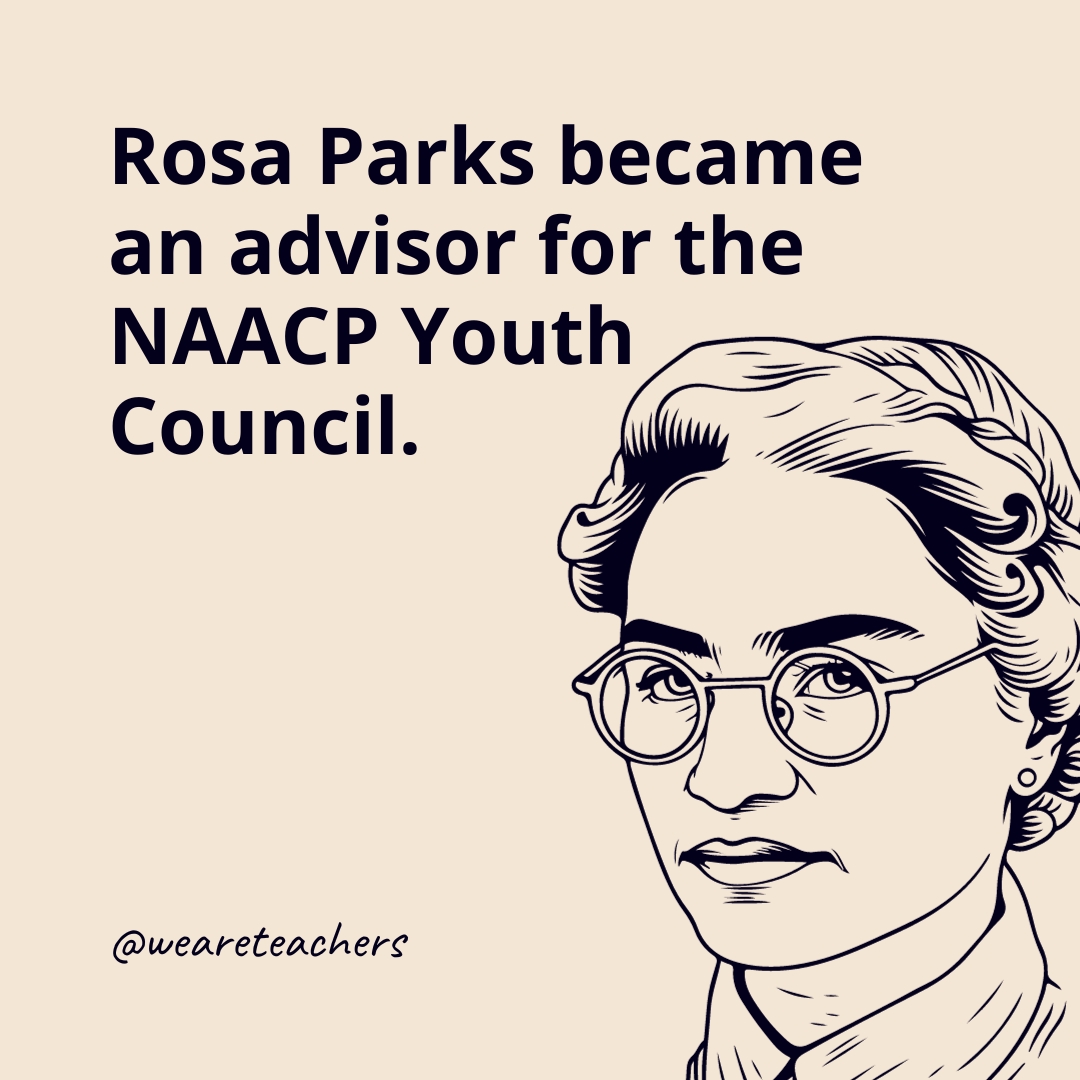
In 1949, Parks encouraged youth members to check out books from the whites-only libraries to challenge the Jim Crow system.
Source: Stanford University
The police arrested Rosa Parks for refusing to give up her bus seat to a white passenger.
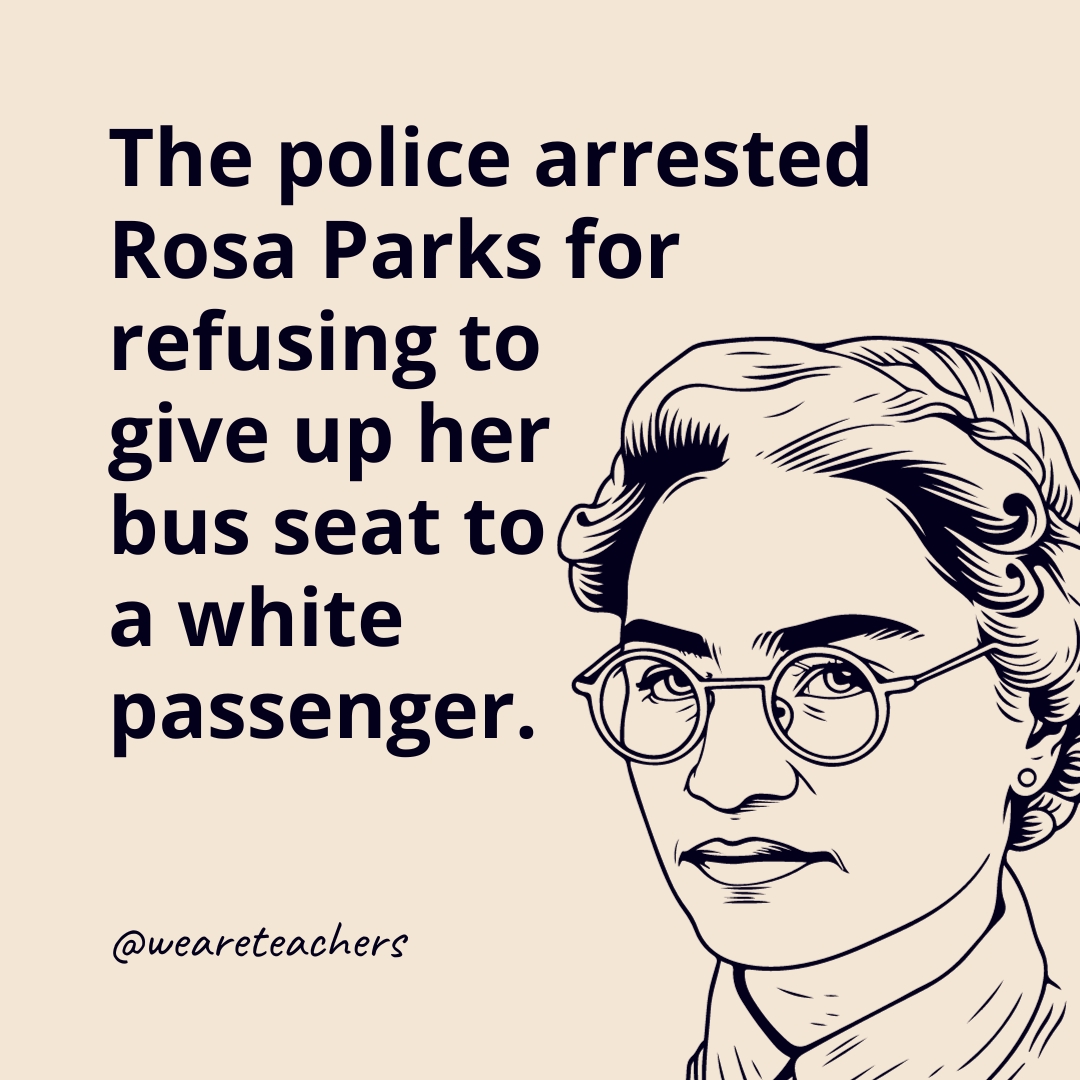
It happened on December 1, 1955. She became the second woman to be arrested for doing so after Claudette Colvin.
Source: Library of Congress
Rosa Parks had a history with the bus driver who had her arrested.
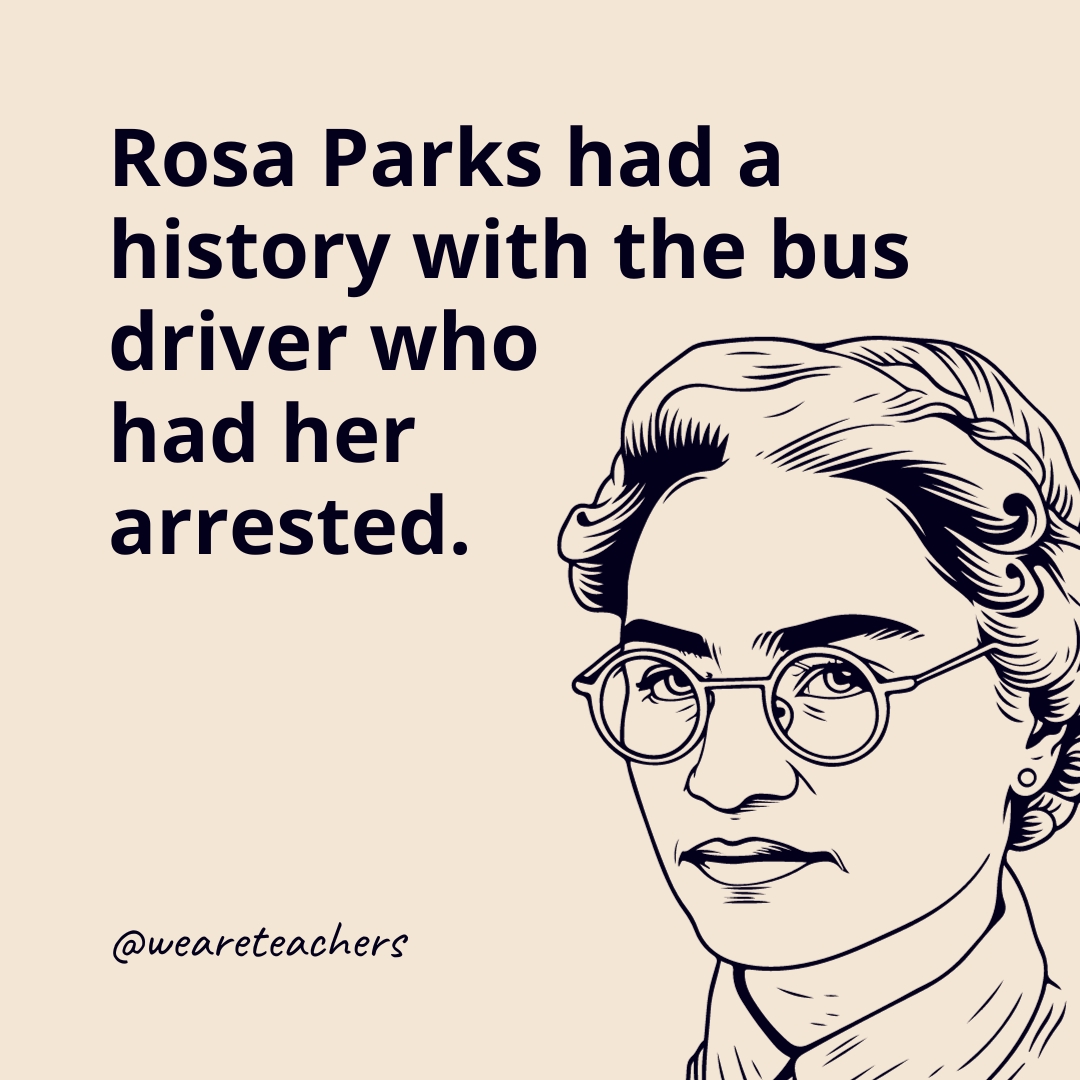
Parks had avoided bus driver James Blake since 1943 when he’d driven off without letting her pay her fare. She had been actively avoiding him but didn’t notice him that day. “If I had been paying attention,” she said, “I wouldn’t even have gotten on that bus.”
Source: The History Channel
Rosa Parks helped organize a boycott of the Montgomery bus system.
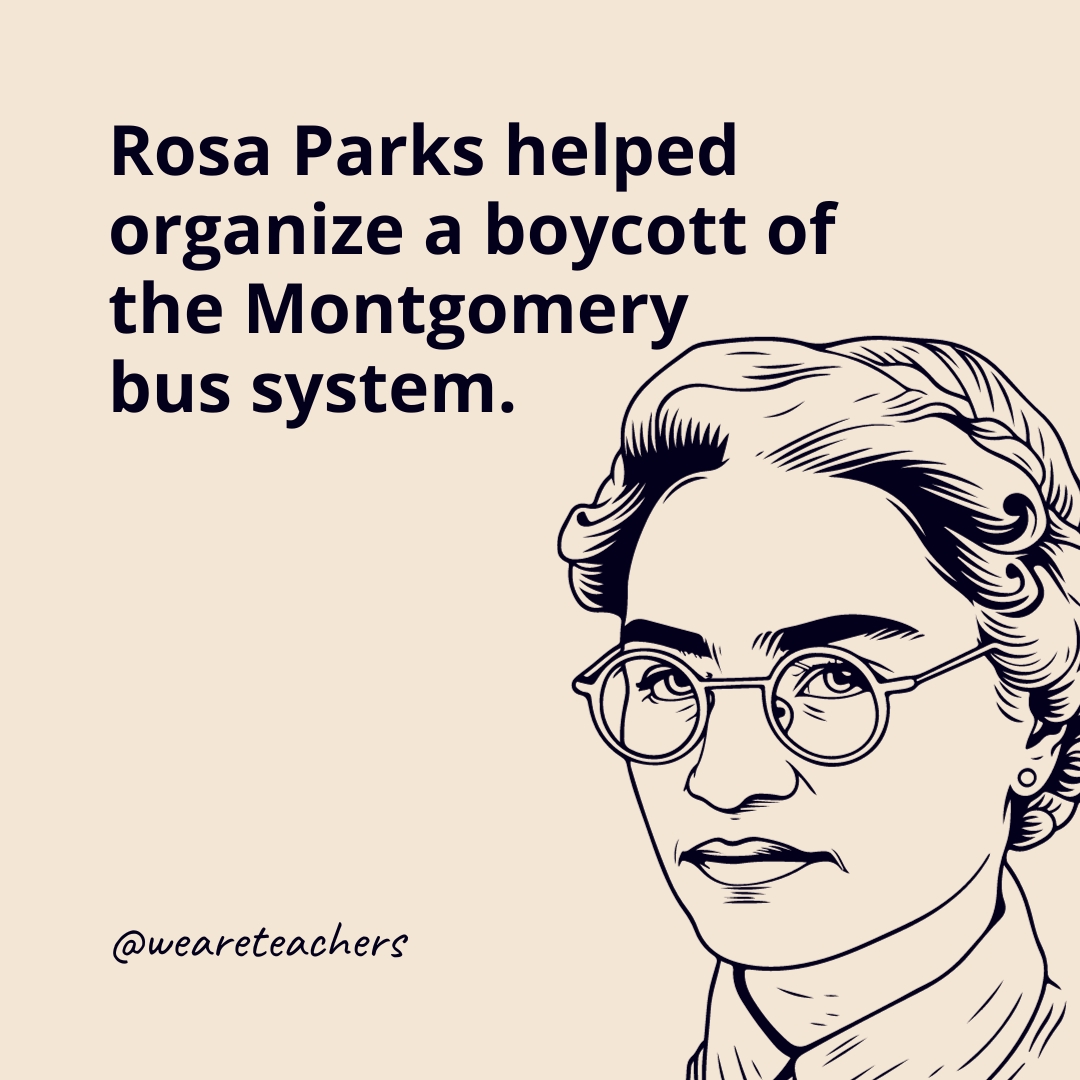
On the day of Parks’ trial, people protested by skipping the bus. Instead, they walked and found other ways to get to work. This inspired the Montgomery Bus Boycott, which lasted for 381 days. In the end, the Supreme Court declared segregation on public transit unconstitutional.
Source: U.S. National Archives
The police arrested Rosa Parks a second time.
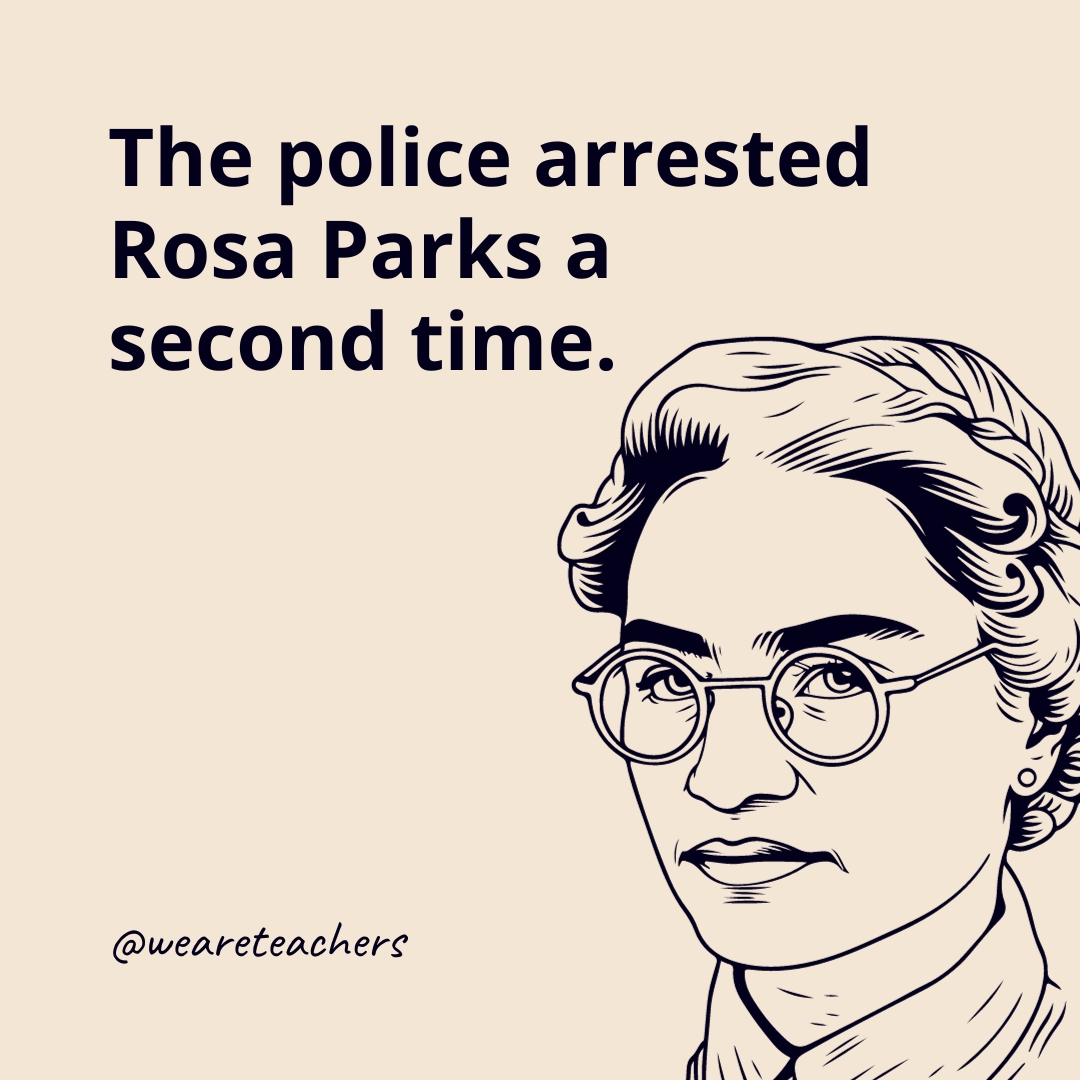
On February 22, 1956, 114 protesters, including Parks and Dr. Martin Luther King Jr., were arrested for challenging bus segregation laws. The high-profile arrest put a media spotlight on the boycott, which ultimately helped the movement.
Source: Equal Justice Initiative
Rosa Parks lost her job.
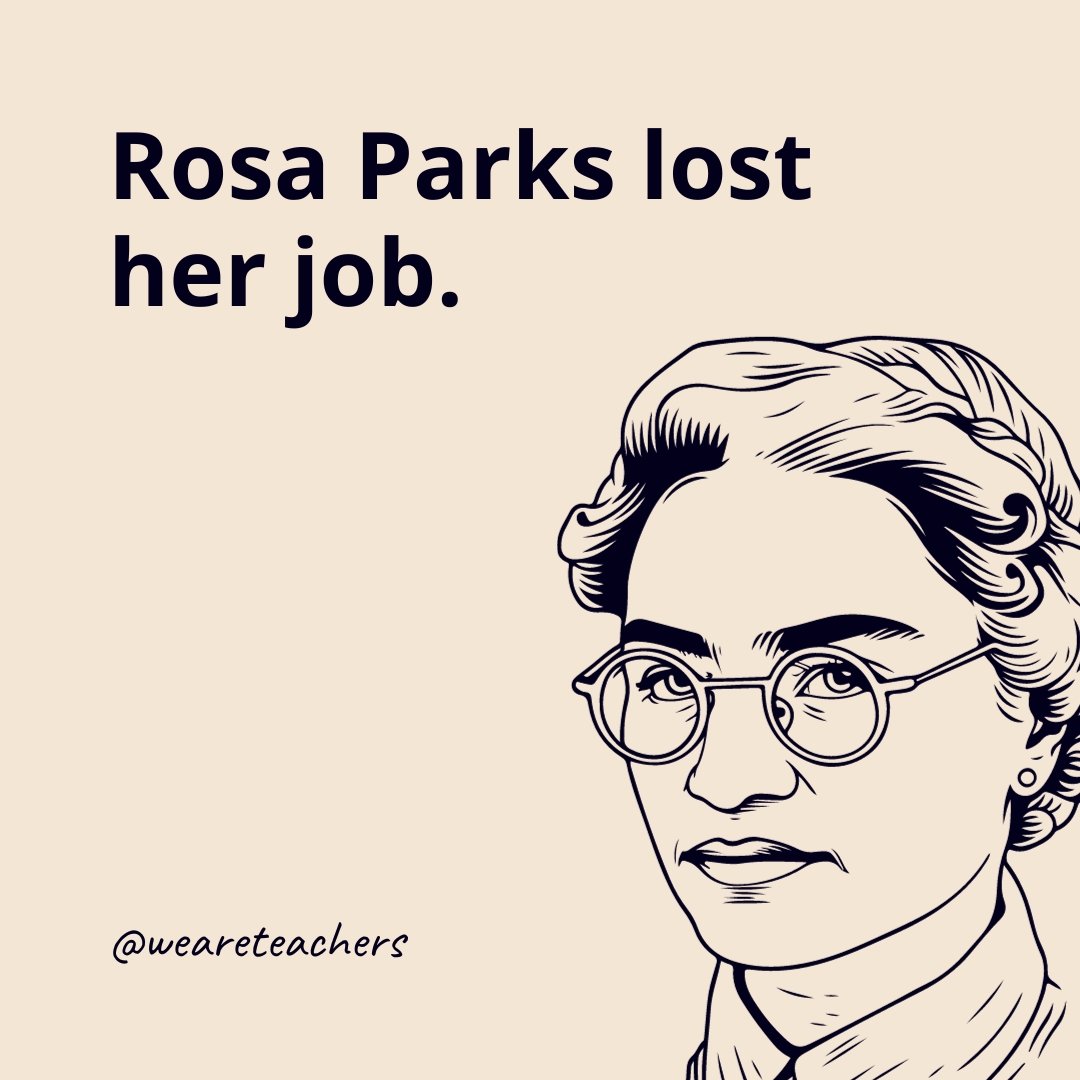
Parks worked as a seamstress at the Montgomery Fair department store but was fired after her arrest. Her employers claimed, however, that it was not because of the boycott. Her husband lost his job as well.
Source: The History Channel
Rosa Parks and her husband received death threats.
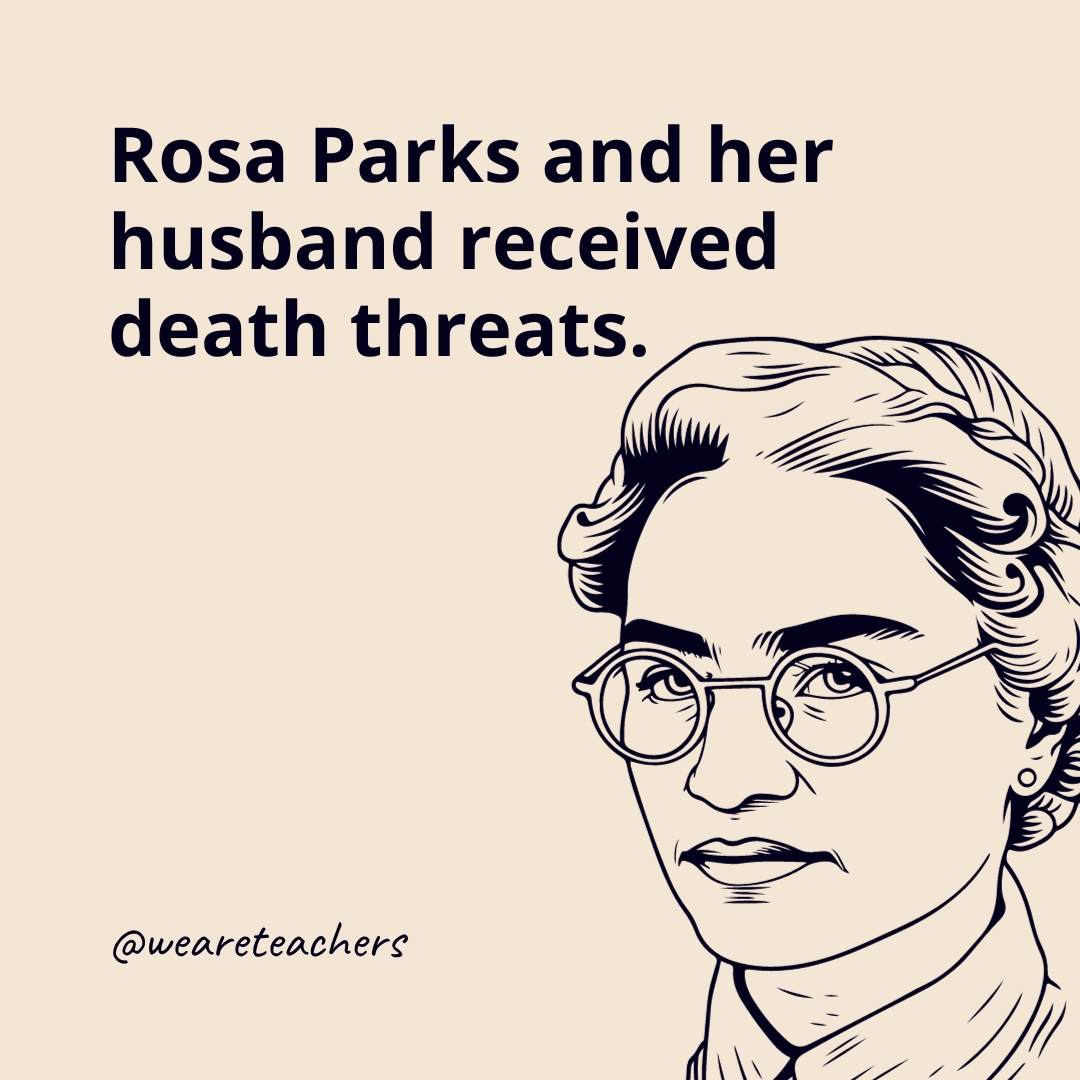
After receiving endless phone calls and death threats, Rosa and Raymond Parks, along with her mother, moved to Detroit in 1957.
Source: National Park Service
Rosa Parks remained involved in activism throughout her life.
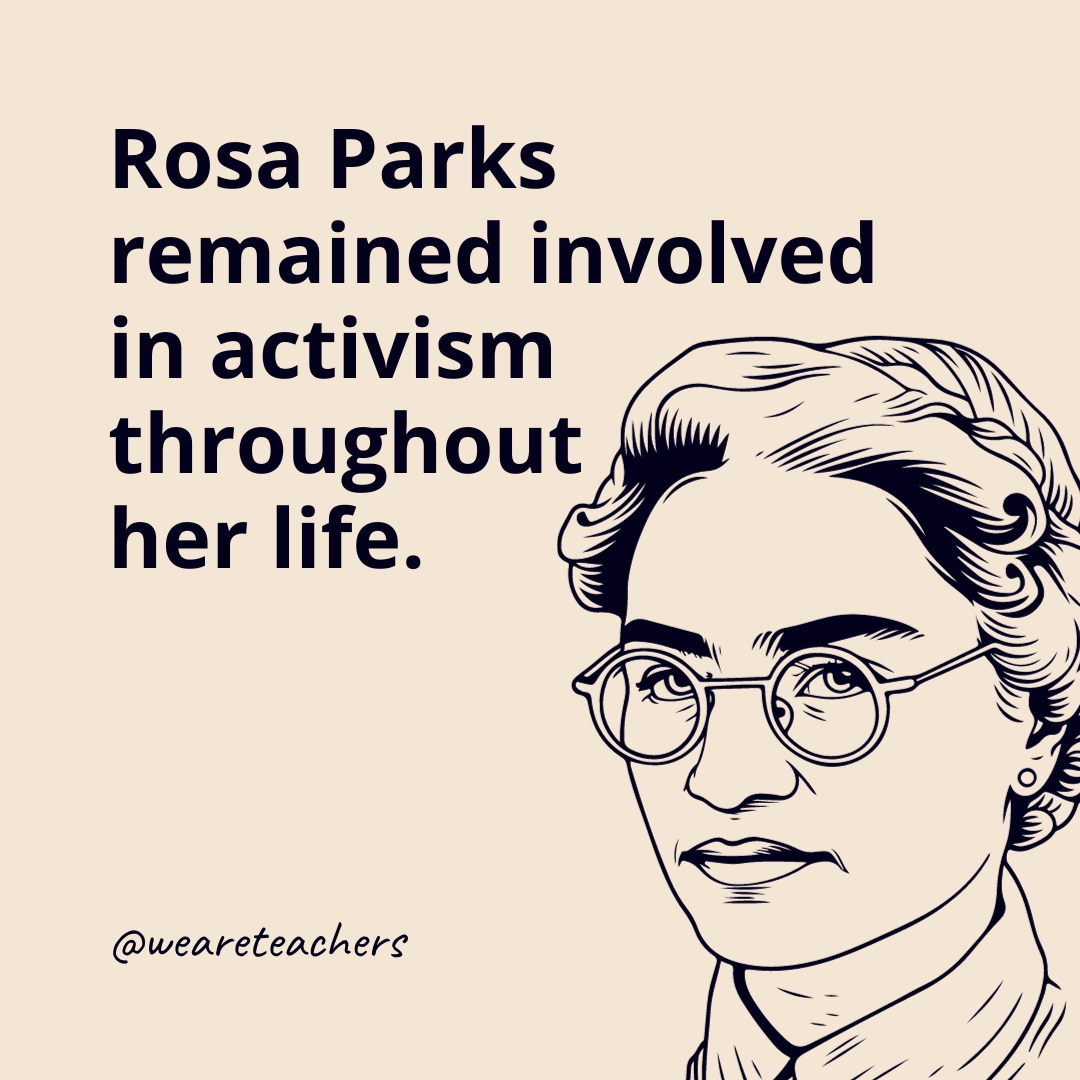
Parks participated in the Prayer Pilgrimage for Freedom, the March on Washington for Jobs and Freedom, and the Selma-to-Montgomery March, and she worked in Congressman John Conyers’ district office and even served on the board of Planned Parenthood.
Source: Library of Congress
The NAACP awarded Rosa Parks the Spingarn Medal.

Rosa Parks was awarded the Spingarn Medal in 1979. As described when this award was founded, this honor is “the man or woman of African descent and American citizenship who shall have made the highest achievement during the preceding year or years in any honorable field.”
Source: Britannica
Rosa Parks founded the Rosa and Raymond Parks Institute.

In 1987, the institute was established “to carry on the lifework of Rosa Parks in youth development and civil rights education/advocacy.”
Source: Rosa and Raymond Parks Institute
Rosa Parks was a published author.

Parks co-authored Rosa Parks: My Story, Quiet Strength: The Faith, the Hope, the Heart of a Woman Who Changed a Nation, and Dear Mrs. Parks: A Dialogue With Today’s Youth.
Source: Library of Congress
Rosa Parks filed a lawsuit against hip-hop duo Outkast.
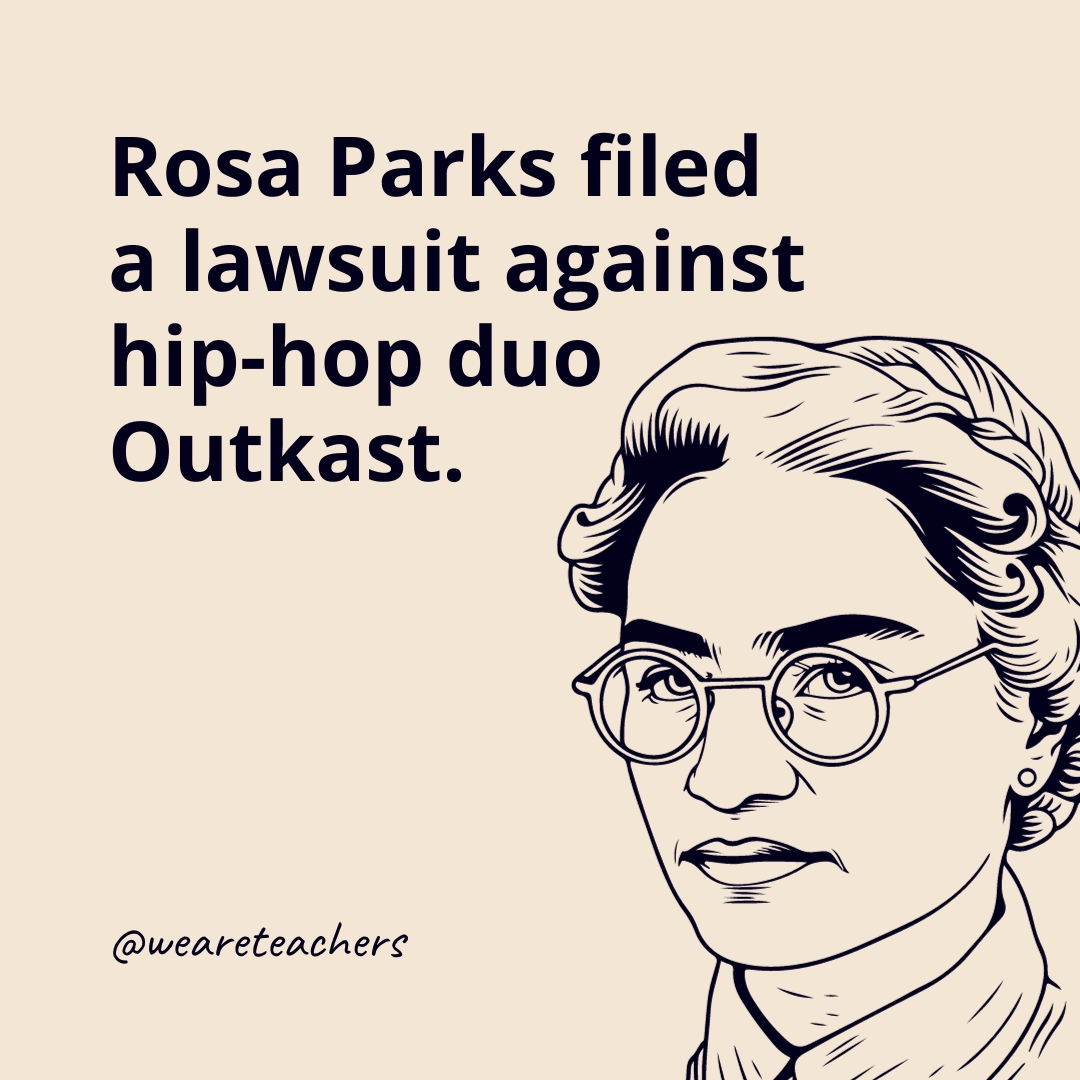
After Outkast released a song titled “Rosa Parks,” Parks argued defamation and false advertising. The 1998 track included the lyrics “Ah-ha, hush that fuss. Everybody move to the back of the bus.” Outkast defended themselves citing the First Amendment. The case was settled seven years later when the group agreed to help create educational programs for youth with the Rosa and Raymond Parks Institute.
Source: Biography
President Clinton awarded Rosa Parks the Presidential Medal of Freedom.

President Bill Clinton awarded Parks this highest honor given by the United States executive branch.
Source: Clinton Digital Library
Congress awarded Rosa Parks the Congressional Gold Medal.

This is the U.S. legislative branch’s highest award.
Source: Library of Congress
Rosa Parks was the first woman to lie in honor in the nation’s Capitol Rotunda.

Following her death on October 24, 2005, in Detroit, Michigan, Rosa Parks lie in honor in the Rotunda of the Capitol. She was the first woman and only the second person of color to receive that honor.
Source: U.S. Capitol Visitors Center
Also check out these 15 Books About Racial Justice for Kids.
For more content like this, be sure to subscribe to our newsletters.


